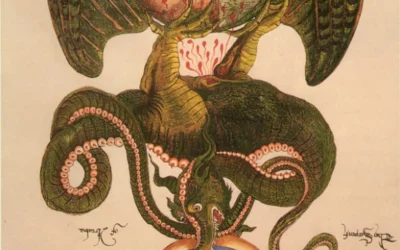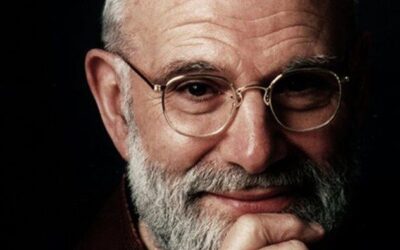Who was Barbara Hannah?
 Barbara Hannah (1891-1986) was a distinguished Jungian analyst, teacher, and author who made significant contributions to the field of analytical psychology. As one of the first generation of Jungian analysts, Hannah played a crucial role in disseminating and developing Carl Jung’s ideas, particularly in the areas of active imagination, the anima and animus, and the psychological significance of animals. Her work as Jung’s biographer and her insights into the practice of analysis have left a lasting impact on the Jungian community.
Barbara Hannah (1891-1986) was a distinguished Jungian analyst, teacher, and author who made significant contributions to the field of analytical psychology. As one of the first generation of Jungian analysts, Hannah played a crucial role in disseminating and developing Carl Jung’s ideas, particularly in the areas of active imagination, the anima and animus, and the psychological significance of animals. Her work as Jung’s biographer and her insights into the practice of analysis have left a lasting impact on the Jungian community.
This essay explores Barbara Hannah’s life and work, situating her contributions within the broader context of analytical psychology. It examines her key ideas, their significance for Jungian theory and practice, and their continuing relevance for contemporary psychology. Finally, it offers a retrospective on Hannah’s legacy, assessing which of her ideas have stood the test of time and how her work compares to that of other figures in the field.
Main Ideas and Key Points:
1. Barbara Hannah was a pioneering Jungian analyst who worked closely with Carl Jung and contributed significantly to the development of analytical psychology.
2. Her work on active imagination helped to refine and popularize this important technique in Jungian analysis.
3. Hannah’s exploration of the anima and animus concepts offered valuable insights into the contrasexual aspects of the psyche and their role in psychological development.
4. Her book “Striving Towards Wholeness” provided a detailed account of the analytic process, offering practical guidance for analysts and analysands alike.
5. Hannah’s interest in the psychological significance of animals led to innovative work on the role of animal symbolism in dreams and active imagination.
6. As Jung’s biographer, Hannah offered unique insights into the man behind the theory, helping to humanize and contextualize his ideas.
7. Her teaching at the C.G. Jung Institute in Zürich helped to shape several generations of Jungian analysts.
8. Hannah’s work often emphasized the importance of the individual’s relationship to the Self and the process of individuation.
9. Her writings on Jung’s concept of synchronicity contributed to the understanding of this complex and controversial idea.
10. Hannah’s personal journey as an analyst and her openness about her own psychological struggles have inspired many in the field.
Timeline of Barbara Hannah’s Life:
1891 – Born on April 4 in Holloway, England.
1909 – Begins studying at the Slade School of Fine Art in London.
1920s – Suffers from recurring bouts of depression and anxiety.
1929 – First meets Carl Jung at a seminar in Zürich.
1930 – Begins analysis with Jung.
1931 – Moves to Zürich to continue her analysis and training.
1936 – Becomes one of the founding members of the Psychological Club in Zürich.
1940s – Begins practicing as a Jungian analyst.
1950 – Starts teaching at the newly founded C.G. Jung Institute in Zürich.
1956 – Publishes her first book, “Striving Towards Wholeness”.
1965 – Publishes “Encounters with the Soul: Active Imagination as Developed by C.G. Jung”.
1976 – Publishes “Jung: His Life and Work, A Biographical Memoir”.
1981 – Publishes “The Inner Journey: Lectures and Essays on Jungian Psychology”.
1986 – Passes away on May 29 in Zürich, Switzerland, at the age of 95.
Early Life and Introduction to Jung
Barbara Hannah was born in 1891 in Holloway, England. She grew up in a cultivated family environment that fostered her early interest in art and literature. Hannah studied at the Slade School of Fine Art in London, but her artistic career was interrupted by recurring bouts of depression and anxiety in her twenties.
In 1929, Hannah attended a seminar given by Carl Jung in Zürich. This encounter proved to be a turning point in her life. Deeply impressed by Jung’s ideas and personality, Hannah began analysis with Jung the following year. In 1931, she made the decision to move to Zürich permanently to continue her analysis and training.
Development as a Jungian Analyst
Under Jung’s guidance, Hannah began to explore the depths of her own psyche through analysis and active imagination. She became an active member of the Psychological Club in Zürich, a group founded by Jung for the study and development of analytical psychology.
Throughout the 1940s, Hannah established herself as a practicing analyst. Her own experiences with psychological struggles gave her a deep empathy for her patients and a firsthand understanding of the transformative power of Jungian analysis.
In 1950, Hannah began teaching at the newly founded C.G. Jung Institute in Zürich. Her classes on active imagination, dream interpretation, and the anima/animus concept were particularly popular and influential. Many of her students went on to become prominent analysts in their own right.
Key Contributions to Analytical Psychology
Active Imagination:
Barbara Hannah made significant contributions to the development and popularization of active imagination, a key technique in Jungian psychology. In her book “Encounters with the Soul: Active Imagination as Developed by C.G. Jung” (1965), Hannah provided a clear and accessible explanation of this method, along with practical examples from her own experience and that of her patients.
Hannah emphasized that active imagination was not mere fantasy or daydreaming, but a disciplined engagement with the unconscious. She described it as a way of “giving a voice” to unconscious contents, allowing them to unfold and develop in consciousness. Hannah’s work helped to establish active imagination as a central tool in Jungian analysis, used for processing dreams, working through complexes, and facilitating individuation.
Anima and Animus:
Building on Jung’s concepts of anima (the feminine aspect in men) and animus (the masculine aspect in women), Hannah offered valuable insights into how these contrasexual elements of the psyche operate in practice. She observed that the animus in women often manifested as a critical inner voice or a collection of rigid opinions, while the anima in men frequently appeared as moods or vague feelings.
Hannah emphasized the importance of developing a positive relationship with one’s anima or animus as a key aspect of psychological growth. She saw this inner “other” not just as a source of problems, but as a potential bridge to the unconscious and a guide on the path of individuation.
The Analytic Process:
In her book “Striving Towards Wholeness” (1956), Hannah provided a detailed account of the analytic process, drawing on her experiences as both an analyst and an analysand. This work offered valuable insights into the practical aspects of Jungian analysis, including the importance of the therapeutic relationship, the role of dreams and active imagination, and the challenges and rewards of the individuation process.
Hannah’s approach emphasized the uniqueness of each individual’s journey and the importance of adapting analytical techniques to the needs of the particular patient. She stressed that the goal of analysis was not to achieve some predetermined state of “normality,” but to help each person become more fully themselves.
Animal Symbolism:
Hannah had a particular interest in the psychological significance of animals, both in dreams and in active imagination. She saw animal symbols as representations of instinctual energies and as potential guides to aspects of the psyche that had been neglected or repressed.
In her teachings and writings, Hannah explored how engagement with animal images could facilitate psychological growth and integration. She encouraged her patients to develop relationships with the animals that appeared in their dreams and active imaginations, seeing these as opportunities to reconnect with vital aspects of their nature.
Jung’s Biographer:
As one of Jung’s close associates and a longtime student, Hannah was uniquely positioned to write about his life and work. Her book “Jung: His Life and Work, A Biographical Memoir” (1976) offered an intimate and insightful portrait of Jung as both a man and a thinker.
Hannah’s biography helped to humanize Jung, presenting him not just as a brilliant theorist but as a complex individual with his own struggles and contradictions. At the same time, she provided valuable context for understanding the development of his ideas and their significance for depth psychology.
Legacy and Influence
Barbara Hannah’s contributions to analytical psychology have had a lasting impact on the field. Her clear and accessible writings have helped to make Jungian concepts more widely understood and applicable. Her work on active imagination, in particular, continues to be influential in Jungian practice.
As a teacher at the C.G. Jung Institute, Hannah played a crucial role in shaping several generations of Jungian analysts. Her emphasis on the practical application of Jung’s ideas and her openness about her own psychological journey have inspired many in the field to approach analysis with both rigour and humanity.
Hannah’s writings on the anima and animus have contributed to ongoing discussions about gender and psychology within the Jungian community. While some of her ideas about gender may seem dated by contemporary standards, her insights into the dynamics of the contrasexual psyche continue to be valuable.
Her work on animal symbolism has been particularly influential in eco-psychology and in approaches to dream work that emphasize the connection between psyche and nature. This aspect of her work resonates with contemporary concerns about the human relationship to the natural world.
Critique and Retrospective
As with any influential thinker, Barbara Hannah’s work has been subject to critique and revision over time. Some of the limitations and biases of her approach include:
1. Cultural specificity: Like much of early Jungian theory, Hannah’s ideas were developed primarily in a European context and may not be universally applicable.
2. Gender essentialism: Some of Hannah’s writings on the anima and animus reflect binary gender assumptions that have been challenged by contemporary gender theory.
3. Lack of empirical validation: As with much of depth psychology, Hannah’s approaches rely more on clinical observation and symbolic interpretation than on empirical research.
4. Potential for over-interpretation: Some critics argue that Hannah’s approach to animal symbolism and active imagination risks reading too much meaning into spontaneous psychic contents.
Despite these limitations, Hannah’s work continues to offer valuable insights into the nature of the psyche and the process of individuation. Her emphasis on the practical application of Jungian ideas, her exploration of active imagination, and her insights into the analytic process remain relevant to contemporary psychology.
Hannah’s personal journey – from a struggling art student to a respected analyst and teacher – serves as an inspiring example of the transformative potential of depth psychology. Her openness about her own psychological struggles has helped to destigmatize mental health issues within the analytic community.
Legacy
Barbara Hannah’s contributions to analytical psychology represent a significant body of work that has enriched our understanding of the human psyche and the process of individuation. Her explorations of active imagination, the anima and animus archetypes, and animal symbolism have provided valuable tools for psychological growth and self-understanding.
As we continue to grapple with questions of psychological development, creativity, and the relationship between conscious and unconscious in our own time, Hannah’s work offers a valuable perspective. Her emphasis on the practical application of Jungian ideas, her insights into the analytic process, and her exploration of symbolic thinking remains relevant and inspiring.
While it is important to approach her ideas critically, recognizing their historical and cultural context, Hannah’s legacy continues to offer rich possibilities for contemporary psychology. By engaging with her work, we can deepen our understanding of the complex interplay between conscious and unconscious, personal and collective, that shapes our psychological lives.
In honoring Barbara Hannah’s contributions, we also recognize the important role of women in the development of analytical psychology. Her story reminds us of the value of personal experience and clinical insight in the ongoing evolution of psychological theory and practice.
As we move forward, may we continue to draw inspiration from Hannah’s dedication to psychological understanding, her practical approach to the complexities of the psyche, and her vision of human potential. In doing so, we carry forward the spirit of inquiry and integration that characterized her life’s work, contributing to the ongoing development of a psychology that honors the full depth and breadth of human experience.
Read More Depth Psychology Articles:
Taproot Therapy Collective Podcast
Jungian Analysts
Bibliography:
Hannah, Barbara. Striving Towards Wholeness. Chiron Publications, 1988 (originally published 1956).
Hannah, Barbara. Encounters with the Soul: Active Imagination as Developed by C.G. Jung. Sigo Press, 1981 (originally published 1965).
Hannah, Barbara. Jung: His Life and Work, A Biographical Memoir. Shambhala, 1997 (originally published 1976).
Hannah, Barbara. The Inner Journey: Lectures and Essays on Jungian Psychology. Inner City Books, 2000.
Kirsch, Thomas B. The Jungians: A Comparative and Historical Perspective. Routledge, 2000.
Stein, Murray. Jung’s Map of the Soul: An Introduction. Open Court, 1998.
von Franz, Marie-Louise. Psychotherapy. Shambhala, 1993.
Shamdasani, Sonu. Jung and the Making of Modern Psychology: The Dream of a Science. Cambridge University Press, 2003.
Further Reading:
Hannah, Barbara. The Cat, Dog and Horse Lectures. Chiron Publications, 1992.
Kaplinsky, Catherine. “Barbara Hannah: The Long Journey Home.” Journal of Analytical Psychology, vol. 55, no. 1, 2010, pp. 69-85.
Stein, Murray (ed.). Jungian Psychoanalysis: Working in the Spirit of C.G. Jung. Open Court, 2010.
Rowland, Susan. Jung: A Feminist Revision. Polity Press, 2002.
Papadopoulos, Renos K. (ed.). The Handbook of Jungian Psychology: Theory, Practice and Applications. Routledge, 2006.


























0 Comments